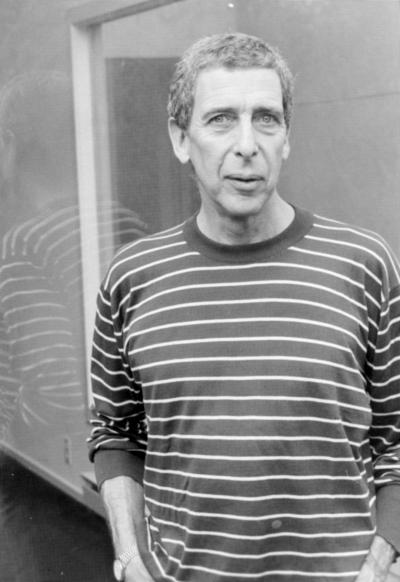Klaus Kertess, 76, Curator and Art Dealer

Klaus Kertess, a curator, writer, and art dealer whose enduring influence in the art world began 50 years ago when he opened the Bykert Gallery on East 81st Street, died of a heart attack at home in Manhattan on Saturday. He was 76.
Mr. Kertess, who also shared a house in East Hampton with his partner of more than 40 years, the painter Billy Sullivan, who survives him, was a curator at the Parrish Art Museum from 1983 to 1989, after which he served for six years as adjunct curator of drawings at the Whitney Museum of American Art, where he organized the 1995 Biennial exhibition. He was in demand throughout his career as a guest curator.
A prolific writer, he wrote or co-wrote more than 30 books about art and artists, including monographs on Willem de Kooning, Matthew Barney, Brice Marden, Jane Freilicher, Alfonso Ossorio, Joan Mitchell, Joel Shapiro, and John Chamberlain. He also wrote fiction, including “South Brooklyn Casket Company,” a volume of short stories.
It is difficult to overestimate the importance of the Bykert Gallery, which he opened in 1966 with the backing of Jeff Byers, who had been a classmate at Yale. During its nine-year run, it launched the careers of a new generation of artists who came of age in the 1960s, among them Chuck Close, Mr. Marden, Dorothea Rockburne, and David Novros. He left the gallery when it began to feel too much like a business.
“That was traumatic,” he told Patsy Southgate in a 1995 interview for The Star. “I felt like I was divorcing 18 artists. The gallery eventually folded.”
Organizing a Whitney Biennial is always a risk. It is such a high-profile exhibition that the daggers usually emerge as soon as the participating artists are announced, if not before. The 1993 show, which was tilted heavily toward political work, was roundly criticized, so undertaking the show’s next iteration was especially risky.
But Mr. Kertess always managed to straddle the many factions of the art world. As Paul Goldberger said in a New York Times article that ran just before the 1995 exhibition opened, “Neither fully comfortable with the formality of the museum or the hustle of the gallery, he is trusted by each realm as a bridge to the other. He has always sought out new artists and new work and is a fierce advocate of those who please his catholic taste.”
Klaus Kertess was born in New York City to Ferdinand Kertess and the former Kate Daasch on July 16, 1940. He grew up in Westchester County and attended the Phillips Academy in Andover, Mass., and Yale University. He did postgraduate study in Bonn and Cologne, Germany.
Returning to New York, “I then held a ridiculous job,” he said, “supposedly buying art for an advertising agency that had no spending money.” That experience made him realize he wanted to run his own gallery.
He and Mr. Sullivan were married on Aug. 21, 2004. “We had a great marriage,” his partner said. “We had a great life together.” In addition to Mr. Sullivan, a son, Sam Sullivan of New York City, a sister, Barbara Kertess of Potomac, Md., and a brother, Hans Kertess of New York, survive him.
Alicia Longwell, the chief curator of the Parrish Art Museum, recalled working with him there. “Klaus curated so many extraordinary exhibitions — for the Parrish and at leading museums around the world — but for me one particular moment stands out. We were finishing the installation on the last wall of the last gallery of his beautiful 1998 show ‘Sea Change.’ He looked at the Jackson Pollock drip painting ‘Phosphorescence’ hanging alongside one of Albert Pinkham Ryder’s roiling seascapes and a broad smile came across his face.”
“ ‘This makes me happier than anything I’ve ever done — to see these two paintings side by side. You know immediately that for Pollock, Ryder was “the only American master.” ’ This is what Klaus did so brilliantly — bringing works of art together and letting them speak for themselves, and this is his enduring legacy.”
A memorial service will be held at the Whitney Museum at a date to be announced, as well as a dispersal of his ashes.
